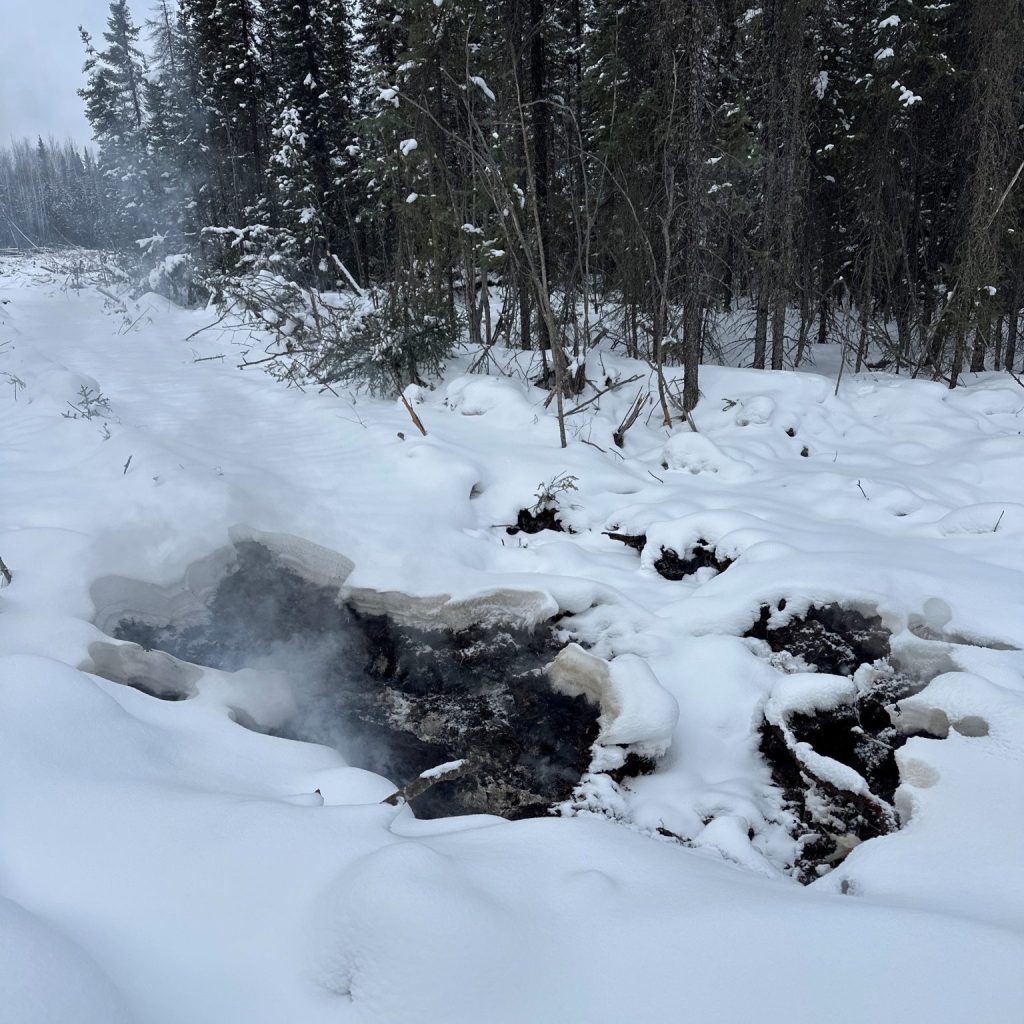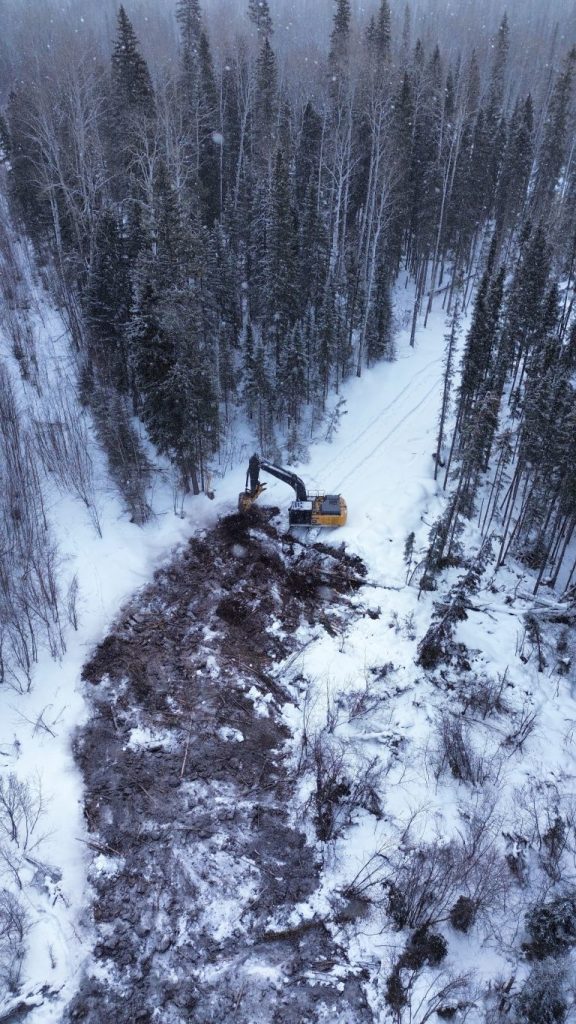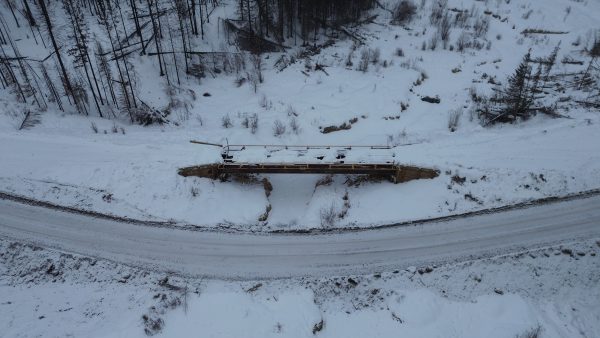In recent years, catastrophic wildfires in the Fort Nelson area have smouldered through the winter months, waiting for warmer temperatures and drier fuels to reignite. These fires occur in boreal forest landscapes—primarily made up of mixed wood stands and muskeg. While muskeg is a defining feature of the landscape, its saturated ground conditions limit traditional fire suppression efforts. In particular, the high water table restricts heavy equipment use during the snow-free season, when machinery risks becoming stuck or causing ecological damage.
Recognizing this challenge, the Fort Nelson Fire Zone began exploring alternative approaches. Drawing on tactics used by local industry and other wildfire agencies across Canada, the team adapted their strategy to take advantage of winter conditions—when frozen ground allows safer and more effective equipment operations.
This shift in thinking began during the summer. Staff observed that natural fire barriers, typically relied upon as defensible features, were no longer effective under local drought conditions. As these features failed, the need for constructed control lines grew—but so did the limitations. Equipment couldn’t be safely operated on unfrozen muskeg. Misplaced lines could lead to sinking machinery, endangered personnel, and wasted resources. Local industry, which has dealt with similar terrain for decades, had already adapted by moving much of their heavy equipment work to winter. That insight helped spark the zone’s new approach.

By fall, Fort Nelson staff were engaging internally and externally—with local partners, industry contractors, and provincial partners—to develop plans for winter operations. The first step was to identify priority areas of concern on surrounding wildfires. Crews focused on locations with deep organic layers and mixed wood stands, using visual assessments and known hotspot data. These areas were mapped, and tactical planning began; how to access them, what suppression work could be done, and where to build fuel breaks.
In February, the zone deployed field staff and equipment to begin work. They collaborated with the provincial Predictive Services Unit, using remote sensing and infrared scans to confirm and expand the list of hotspots. The field effort quickly scaled up.


Over the past five weeks, more than 15 pieces of heavy equipment—including dozers, feller-bunchers, skidders, excavators, and low beds—have been active in the area. Together, they’ve constructed over 87 kilometres of access trails, fuel-free lines, helipads, and machine guards. Despite the logistical hurdles of working in remote areas at sub-zero temperatures—like snowplowing, refueling, and building ice bridges—equipment performance has met expectations.
One such ice bridge was built to allow low beds and vehicles to cross a waterway where the bridge deck had been damaged by fire. Taking advantage of frozen conditions, the team minimized environmental impact by routing work along existing features such as seismic lines and resource roads. Rehabilitation specialists supported this effort, guiding operations to reduce long-term land disturbance and ensure post-operation restoration. To date, over four kilometres of unsuitable machine guard have been rehabilitated, and stream crossings are being restored as part of demobilization plans.
As spring approaches, heavy equipment operations are beginning to wind down, but work and planning to support fire suppression through the coming season continues. The newly constructed helipads will allow access to remote hotspots during the spring and summer, helping crews suppress flare-ups more quickly and safely. As we transition into a new fire season, we’ll continue evaluating the effectiveness of this initiative—and refining it for the future.
